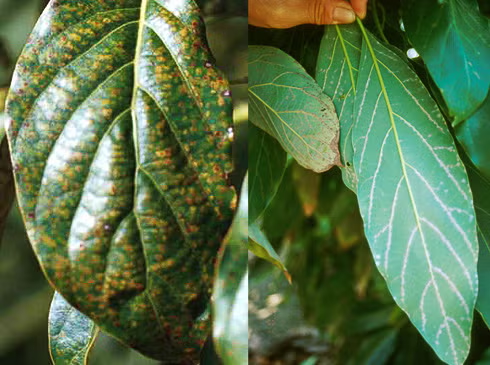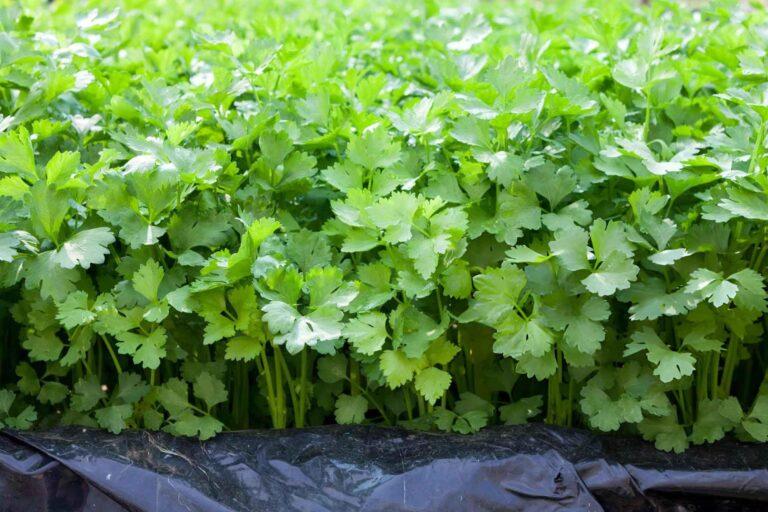
Potato Farming
Ever wondered how Nyandarua farmers earn Ksh. 200,000 per acre from potatoes?
As Kenya’s second most important food crop, potatoes support over 2 million farmers and fuel booming fast-food markets in Nairobi and beyond.
With prices at Ksh. 30-50 per kilo, potato farming offers huge profits in 2025.
This step-by-step guide, tailored for Kenyan farmers, shows you how to grow potatoes from certified seeds to market.
Start your potato farm today and tap into this high-demand crop!
Why Grow Potatoes in Kenya?
There are three reasons why you should choose potato farming. Fast maturity and ready market. As for profitability, it varies depending on prevailing market prices.
Normally, under good soil conditions and with a sufficient water supply, potatoes take at least 90 days.
There is always high demand for potatoes in Kenya. The main problem is usually market accessibility.
The inability of farmers to deliver their potatoes directly to the market leaves them at the mercy of brokers who buy at throwaway prices.
Ideal Conditions for Potato Farming in Kenya
Potatoes thrive in cool temperatures of 15-20°C. The best areas to plant potatoes commercially with these ideal climatic conditions are Nyeri, Kiambu, Narok, Bomet, Nyandarua, Nakuru, Meru, and Elgeyo Marakwet.
Potatoes require well-drained, loamy soil with a pH of 5.5-6.5. Avoid planting on clay soils or waterlogged areas to prevent rot.
The Best Potato Varieties to Plant
3 Best Potato Varieties
- Shangi: Fast-maturing (90 days), high-yielding (10-15 tons per acre), popular for chips. It has low dormancy and high resistance to blight.
- Kenya Mpya: Disease-resistant, matures in 100-120 days, yields 12-18 tons.
- Clone IG-70: New KALRO variety, high yields (15-20 tons), blight-resistant.
- Other varieties include Sherekea and Markies.
For better yields, always choose certified seeds. You can buy certified seeds from the KARLO centre.
Planting Potatoes
Plough the land as loosely as possible and free of weeds. Plant the seeds 30 cm apart in rows 75 cm apart and 10-15 cm deep. The main target is to have 14,000-16,000 plants per acre.
The best time to plant potatoes in Kenya is often during rainy seasons (March-May or October-December). Potatoes require a lot of water in order to grow and expand.
Read Also: Important characteristics of various potatoes varieties in Kenya-updated
After sprouting, make sure you ridge. Ridging helps protect tubers from sun damage, which can cause tuber greening.
Normally, potatoes take 90-120 days to grow in Kenya.
Best Fertilizers for Potato Farming in Kenya
In commercial potato farming, it’s always ideal to carry out soil testing to establish the pH, nutritional content, and health status.
Before planting, apply 2-3 tons of well-decomposed manure per acre and mix evenly. Apply DAP (18-46-0) at the rate of 50 kg per acre 21 days after sowing. Later, 60 days after sowing, topdress with NPK 17.17.17 at the rate of 50 kg per acre.
DAP and NPK 17.17.17 are the best fertilizers for potato farming in Kenya.
Watering and Irrigation
Potatoes need water to develop big tubers. Constant moisture is paramount during tuber formation, but avoid over-irrigation to prevent root rot.
In dry seasons, water at least 2-3 times weekly. Drip irrigation is often the most efficient system in dry seasons.
How to manage pests and diseases in potato farming
Common Potato Pests:
Aphids:
These are sap-sucking insects that tend to transmit viral diseases in potatoes like potato leaf roll virus.

Aphid-transmitted viruses probably cause greater economic loss in potato production than all other insect-related damage.
You can spray Thunder or Profile insecticides mixed with Integra or Aquawet sticker.
Potato Cyst Nematodes (PCN):
Nematodes are tiny microscopic worms, with some soil-dwelling species infecting and adversely affecting most, if not all, cultivated crops.
The management of PCN is particularly challenging due to the pest’s ability to survive in the soil as tiny protective cysts.
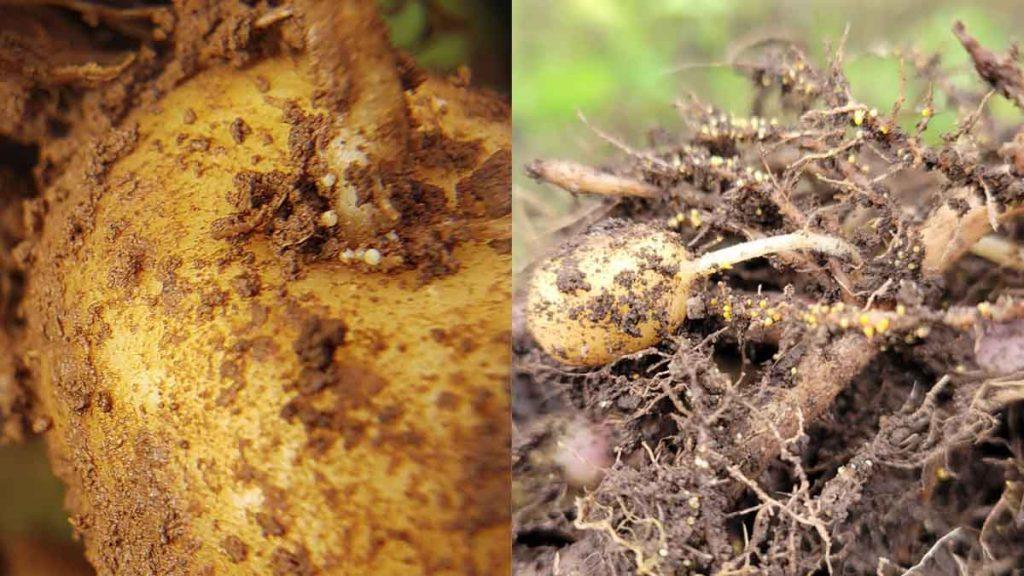
Initially, crops display patches of poor growth, and affected plants may show chlorosis and wilting, with poor top growth. These symptoms develop from the ground upwards.
If an affected plant is lifted carefully, it should be possible to see many pinhead-sized spherical objects, known as cysts, on the roots.
Nematode cysts are the dead bodies of females, which can contain 200-600 eggs each. The cysts may be white, yellow, or chestnut brown in color and can be seen more readily with the aid of a hand lens.
Heavily infested plants die prematurely and yield a poor crop of undersized tubers that often show signs of rotting.
When an area is first infected by the potato cyst nematode, only a small part of it may be affected, but in successive years, the population will increase and spread through the movement of soil.
The affected area will enlarge until it becomes impossible to grow worthwhile potatoes.
The best solution is crop rotation or planting them in fields that have never been planted before.
Common Potato Diseases:
Late Blight:
It is a fungal disease with the first symptoms of late blight in the field being small, light- to dark-green, circular- to irregular-shaped, water-soaked spots.
These lesions usually appear first on the lower leaves. Lesions often begin to develop near the leaf tips or edges, where dew is retained the longest.
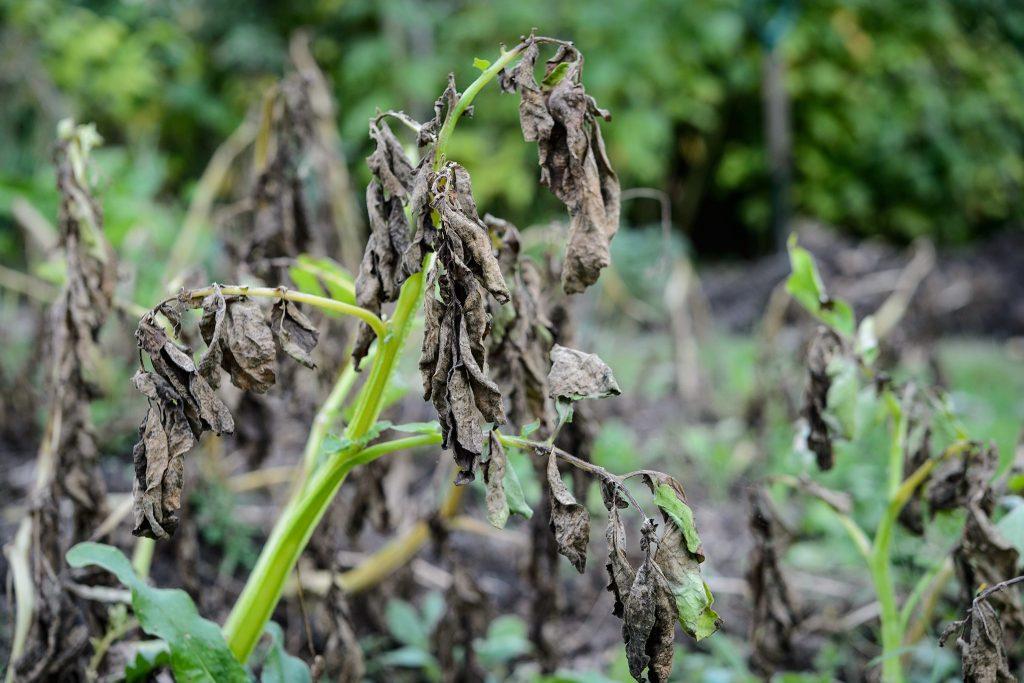
During cool, moist weather, these lesions expand rapidly into large, dark brown or black lesions, often appearing greasy. Leaf lesions are also frequently surrounded by a yellow chlorotic halo.
Apply Ridomil (25 g per 20 litres) at the early signs or as a preventive measure.
Bacterial Wilt:
Bacterial wilt is caused by a soil-borne bacterium. Wilting is first seen as a drooping of the tip of some of the lower leaves, similar to that caused by a temporary shortage of water. At first, only one branch on a hill may show wilting.
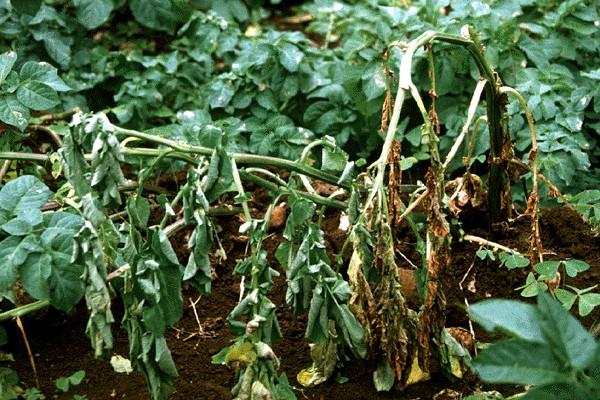
Affected leaves later become permanently wilted and roll upwards and inwards from the margins. The wilting then extends to leaves further up the stem and is followed by a yellowing of the leaves.
This yellowing, wilting, and in-rolling of the leaves makes diseased plants very obvious, especially when surrounded by healthy plants. The leaves finally turn brown and fall off, beginning at the base of the stem and continuing upwards.
Unfortunately, there is no cure; use certified seeds and rotate crops.
Harvesting Potatoes
Potatoes are usually mature 90-120 days after planting, when leaves turn yellow and die back. To harvest, dig gently with a fork to avoid tuber damage.
Frequently Asked Questions About Potato Farming in Kenya
- How long does it take to grow potatoes? Normally, potatoes take 90-120 days to mature, depending on variety and management.
- Which potato varieties are best? Shangi, Kenya Mpya, and Clone IG-70 are the best potato varieties to plant for high yields and disease resistance.
- What are the ideal conditions? Cool climates (15-20°C) and loamy soil (pH 5.5-6.5) with good rainfall are the ideal conditions for potato farming.
- How profitable is it? Profitability depends on market prices and yield per acre. Under a good market price, Ksh. 90,000-200,000 per acre with good management. Loss is also inevitable when potato prices crash.
- What causes low yields? Poor seed quality, pests (e.g., nematodes), diseases (e.g., blight), and poor management.
- Which fertilizers are best? DAP at planting, NPK 17.17.17 for top-dressing.
- Where to buy certified seeds? KARLO centres.
- What are the costs? The costs of farming potatoes range from Ksh. 100,000 to 150,000 per acre for seeds, fertilisers, and labour.
Start your potato farm today! Share your tips or questions in the comments.


